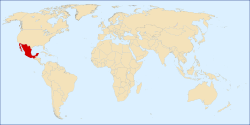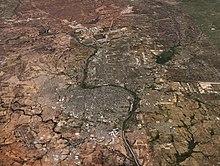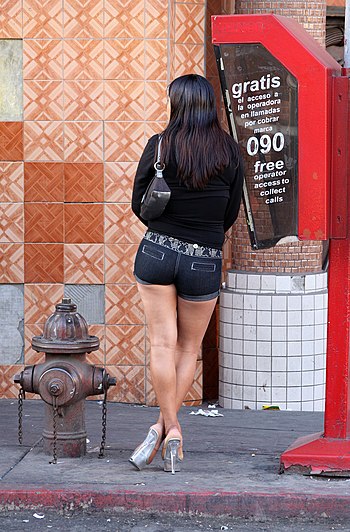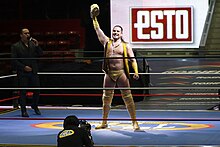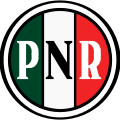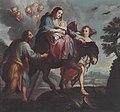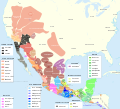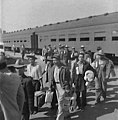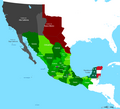Portal:Mexico
|
The Temple of Warriors at Chichen Itza, Mexico
¡Bienvenido! Welcome to the Mexico portal
Mexico, officially the United Mexican States, is a country in the southern portion of North America. It covers 1,972,550 km2 (761,610 sq mi), making it the world's 13th-largest country by area; with a population of almost 130 million, it is the 10th-most-populous country and the most populous Spanish-speaking country. Mexico is organized as a federal constitutional republic comprising 31 states and Mexico City, its capital. It shares land borders with the United States to the north, with Guatemala and Belize to the southeast; as well as maritime borders with the Pacific Ocean to the west, the Caribbean Sea to the southeast, and the Gulf of Mexico to the east.
This is a Featured article, which represents some of the best content on English Wikipedia.
 The Battle of Lipantitlán, also known as the Battle of Nueces Crossing, was fought along the Nueces River on November 4, 1835 between the Mexican Army and Texian insurgents, as part of the Texas Revolution. After the Texian victory at the Battle of Goliad, only two Mexican garrisons remained in Texas, Fort Lipantitlán near San Patricio and the Alamo Mission at San Antonio de Béxar (modern-day San Antonio in the U.S. state of Texas). Fearing that Lipantitlán could be used as a base for the Mexican army to retake Goliad and angry that two of his men were imprisoned there, Texian commander Philip Dimmitt ordered his adjutant, Captain Ira Westover, to capture the fort. The commander of Fort Lipantitlán, Nicolás Rodríguez, had been ordered to harass the Texian troops at Goliad. Rodríguez took the bulk of his men on an expedition; while they were gone, Westover's force arrived in San Patricio. On November 3, a local man persuaded the Mexican garrison to surrender, and the following day the Texians dismantled the fort. Rodríguez returned as the Texians were crossing the swollen Nueces River to return to Goliad. The Mexican soldiers attacked. After a short period, the Mexicans retreated. One Texian was injured, 3–5 Mexican soldiers were killed, and 14–17 were wounded. (Full article...)Selected article -
Laredo–Nuevo Laredo (UN/LOCODE: USLRD & MXNLD) is one of six transborder agglomerations along the U.S.-Mexican border. The city of Laredo is situated in the U.S. state of Texas on the northern bank of the Rio Grande and Nuevo Laredo is located in the Mexican State of Tamaulipas in the southern bank of the river. This area is also known as the Two Laredos or the Laredo Borderplex. The area is made up of one county in the U.S (Webb County in Texas) and three municipalities in Mexico (Nuevo Laredo Municipality in Tamaulipas, Hidalgo Municipality in Coahuila, and Anáhuac Municipality in Nuevo León). Two urban areas (the Laredo Metropolitan Statistical Area and the Zona Metropolitana Nuevo Laredo [Nuevo Laredo Metropolitan Zone]), three cities, and 12 towns make the Laredo–Nuevo Laredo Metropolitan area. The two sides of the Borderplex are connected by four International Bridges and an International Railway Bridge. The Laredo–Nuevo Laredo Metropolitan area has a total of 636,516 inhabitants according to the INEGI Census of 2010 and the United States Census estimate of 2010. According to World Gazetteer this urban agglomeration ranked 157th largest in North and South America in 2010 with an estimated population of 675,481. This area ranks 66th in the United States and 23rd in Mexico. (Full article...)
Selected pictureThis is a Good article, an article that meets a core set of high editorial standards.
Miguel Ángel Chávez Velasco (born August 18, 1988), better known by his ring name Ángel de Oro (Spanish for "Angel of Gold" or "Golden Angel"), is a Mexican professional wrestler who works for the Mexican wrestling promotion Consejo Mundial de Lucha Libre (CMLL). He is currently a double champion in CMLL, as he is the Mexican National Light Heavyweight Champion and the World Tag Team Champion, both in his first reign. In 2018, he was defeated in a Luchas de Apuestas (mascara contra mascara; "mask vs. mask") match by El Cuatrero, and was forced to unmask and be identified. He is a second-generation luchador, the son of Apolo Chávez and the brother of the luchador Niebla Roja, who also works for CMLL. From 2008 to 2011, Ángel de Oro was part of a group called Los Ángeles Celestiales ("The Celestial Angels") alongside his brother (then billed as Ángel de Plata) and Ángel Azteca Jr., but after his brother changed his ring persona, that group has been phased out. After many years of portraying a tecnico ("Good guy") wrestling character, Ángel de Oro and his brother turned rudo and aligned themselves with El Terrible, eventually forming Los Nuevos Ingobernables. (Full article...)Selected biography -Miguel de la Madrid Hurtado (Spanish pronunciation: [miˈɣel de la maˈðɾið uɾˈtaðo]; 12 December 1934 – 1 April 2012) was a Mexican politician affiliated with the Institutional Revolutionary Party (PRI) who served as the 59th president of Mexico from 1982 to 1988. Inheriting a severe economic and financial crisis from his predecessor José López Portillo as a result of the international drop in oil prices and a crippling external debt on which Mexico had defaulted months before he took office, De la Madrid introduced sweeping neoliberal policies to overcome the crisis, beginning an era of market-oriented presidents in Mexico, along with austerity measures involving deep cuts in public spending. In spite of these reforms, De la Madrid's administration continued to be plagued by negative economic growth and inflation for the rest of his term, while the social effects of the austerity measures were particularly harsh on the lower and middle classes, with real wages falling to half of what they were in 1978 and with a sharp rise in unemployment and in the informal economy by the end of his term. (Full article...)
In the news
Selected fare or cuisine - In the United States, Mexican Coca-Cola, or Mexican Coke (Spanish: Coca Cola de Vidrio, English: Glass Coca-Cola, or Coca-Cola in a glass bottle) or, informally, "Mexicoke", refers to Coca-Cola produced in and imported from Mexico. The Mexican formula that is exported into the U.S. is sweetened with white sugar instead of the high-fructose corn syrup used in the American formula since the early 1980s. Some tasters have said that Mexican Coca-Cola tastes better, while other blind tasting tests reported no perceptible differences in flavor. Mexican Coke should not be confused with the domestic version of Coca-Cola sold in Mexico, which since 2017 may contain the artificial sweetener sucralose, with a can containing one-third less sugar than the export product. (Full article...)
General imagesThe following are images from various Mexico-related articles on Wikipedia.
CategoriesTopicsRelated portalsWikiProjectYou are invited to participate in WikiProject Mexico, a WikiProject dedicated to developing and improving articles about Mexico. Associated WikimediaMore portals | ||||||||||




